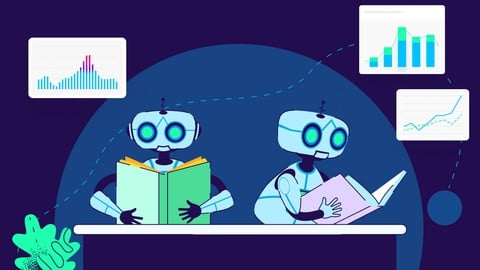
Instructors: The Machine Learning
26 sections • 141 lectures • 15h 47m
Video: MP4 1280×720 44 KHz | English + Sub
Updated 10/2022 | Size: 8.989 GB
Learn To Build Machine Learning Projects Practically
What you’ll learn
Real life case studies and projects to understand how things are done in the real world
Learn best practices when it comes to Data Science Workflow
Learn How to improve your Machine Learning Models
Learn best practices for real-world data sets.
Make powerful analysis
Requirements
basic knowledge of machine learning
Description
Machine learning is important because it gives enterprises a view of trends in customer behavior and business operational patterns, as well as supports the development of new products. Many of today’s leading companies, such as Facebook, Google and Uber, make machine learning a central part of their operations. Machine learning has become a significant competitive differentiator for many companies.
Classical machine learning is often categorized by how an algorithm learns to become more accurate in its predictions. There are four basic approaches: supervised learning, unsupervised learning, semi-supervised learning and reinforcement learning. The type of algorithm data scientists choose to use depends on what type of data they want to predict.
Supervised learning: In this type of machine learning, data scientists supply algorithms with labeled training data and define the variables they want the algorithm to assess for correlations. Both the input and the output of the algorithm is specified.
Unsupervised learning: This type of machine learning involves algorithms that train on unlabeled data. The algorithm scans through data sets looking for any meaningful connection. The data that algorithms train on as well as the predictions or recommendations they output are predetermined.
Semi-supervised learning: This approach to machine learning involves a mix of the two preceding types. Data scientists may feed an algorithm mostly labeled training data, but the model is free to explore the data on its own and develop its own understanding of the data set.
Reinforcement learning: Data scientists typically use reinforcement learning to teach a machine to complete a multi-step process for which there are clearly defined rules. Data scientists program an algorithm to complete a task and give it positive or negative cues as it works out how to complete a task. But for the most part, the algorithm decides on its own what steps to take along the way.
Who this course is for
Beginners in machine learning
Password/解压密码www.tbtos.com